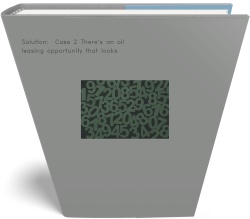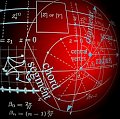A social historian is interested in the relationship between education (measured in years of formal schooling)
-
A social historian is interested in the relationship between education (measured in years of formal schooling) (X) and income (Y). Data from nine individuals were collected and is shown below.
(Use SPSS to do a, b, and c. Do d- k by hand.)
Subject Education (X) Income (in $1,000)
1 4 6
2 6 12
3 8 14
4 11 10
5 12 17
6 14 16
7 16 13
8 17 16
9 20 19- . Determine the average number of years of formal school and the mean income for this sample.
- . Determine the variance in education and income.
- . Compute the correlation between education and income.
- . Using information you obtained in (a), (b), and (c) above, determine the regression equation for predicting income from years of formal education.
- . Predict the income level for a person with 13 years of education.
- . Draw the regression line on the scatterplot.
- . Compute the standard error of estimate.
-
.
If a person has 16 years of education, what is the probability tha he/she will have an income greater
than $20,000? -
.
Develop the CI95 for the predicted income, given 16 years of education.
(j). Test the hypothesis that Ho: B = 0 ( Beta equals zero)
(k). Write a brief report of your interpretation of your analysis.
-
The following data shows the written and clinical scores of 15 students who sat for a professional licensing examination.
- . Use SPSS to (i) provide descriptive statistics (mean, standard deviation, correlation); (ii) run simple linear regression; (iii) develop a scattergram with a ‘fitted’ regression line.
- . Interpret your analysis in terms of (i) what the regression model is, (ii) how good the model is, (iii) the statistical significance of the model, (iv) whether or not written work enhances predication of clinical work.
- . Predict the clinical score for an examinee who has a written score of 77.
- . If a student has a written score of 70, how likely will he/she have a clinical score of 75 or higher?
DATA:
Examinee Written (X) Clinical (Y)
A 85 89
B 76 71
C 92 90
D 60 53
E 81 88
F 84 85
G 95 98
H 56 62
I 76 79
J 68 62
K 93 92
L 71 75
M 88 90
N 69 78
O 80 91
Deliverable: Word Document


![[Solution Library] This project will give you the opportunity to apply the [Solution Library] This project will give you](/images/solutions/MC-solution-library-81025.jpg)
![[Solved] Multiple Choice Section (1 point each, 200 points total) [Solved] Multiple Choice Section (1 point each,](/images/solutions/MC-solution-library-81026.jpg)
![[Solved] Data was collected on fatigue experienced by patients [Solved] Data was collected on fatigue experienced](/images/solutions/MC-solution-library-81027.jpg)


